So you’ve mastered basic SUP—what now? Today there are more ways than ever to enjoy America’s fastest-growing watersport, which saw a more than 60 percent increase in participation from 2014 to 2016. Here are seven novel ways to up your paddle-boarding game, from camping and fishing to going ultralight.
1. Go SUP camping.
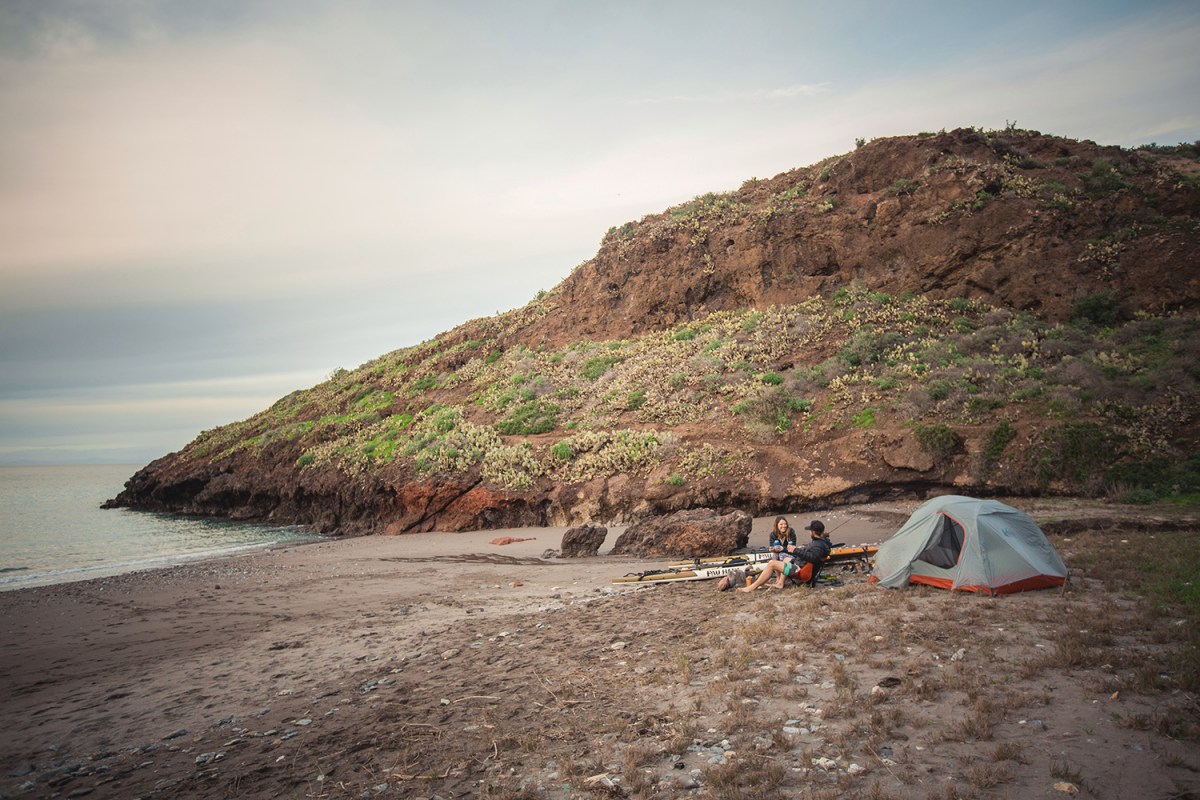
Sure, you’ve been camping, but have you been SUP camping? Having a paddle board opens up places hikers and car campers can’t reach for a truly memorable (read: quiet) experience. And with gear advancements in recent years, it’s on the rise, much like the sport itself.
“I’ve been seeing bigger boards that you can tie more things to,” says Bryan Thomas, an REI Boathouse lead and SUP Outdoor School instructor. These touring-specific boards, like the NRS Escape or the Pau Hana Endurance Air, have multiple D-rings and bungee cords to allow paddlers to attach overnight gear and additional meals to the nose and tail. (First, put your gear in a dry bag or dry duffle bag.) With the ability to carry more stuff, you can tackle longer or harder-to-reach trips—like camping on the non-permitted side of Arizona’s Antelope Canyon via Lake Powell, which is only accessible by SUP or kayak. (The writer did this exact trip in 2016 and saw approximately zero other campers.)
2. Paddle a river.
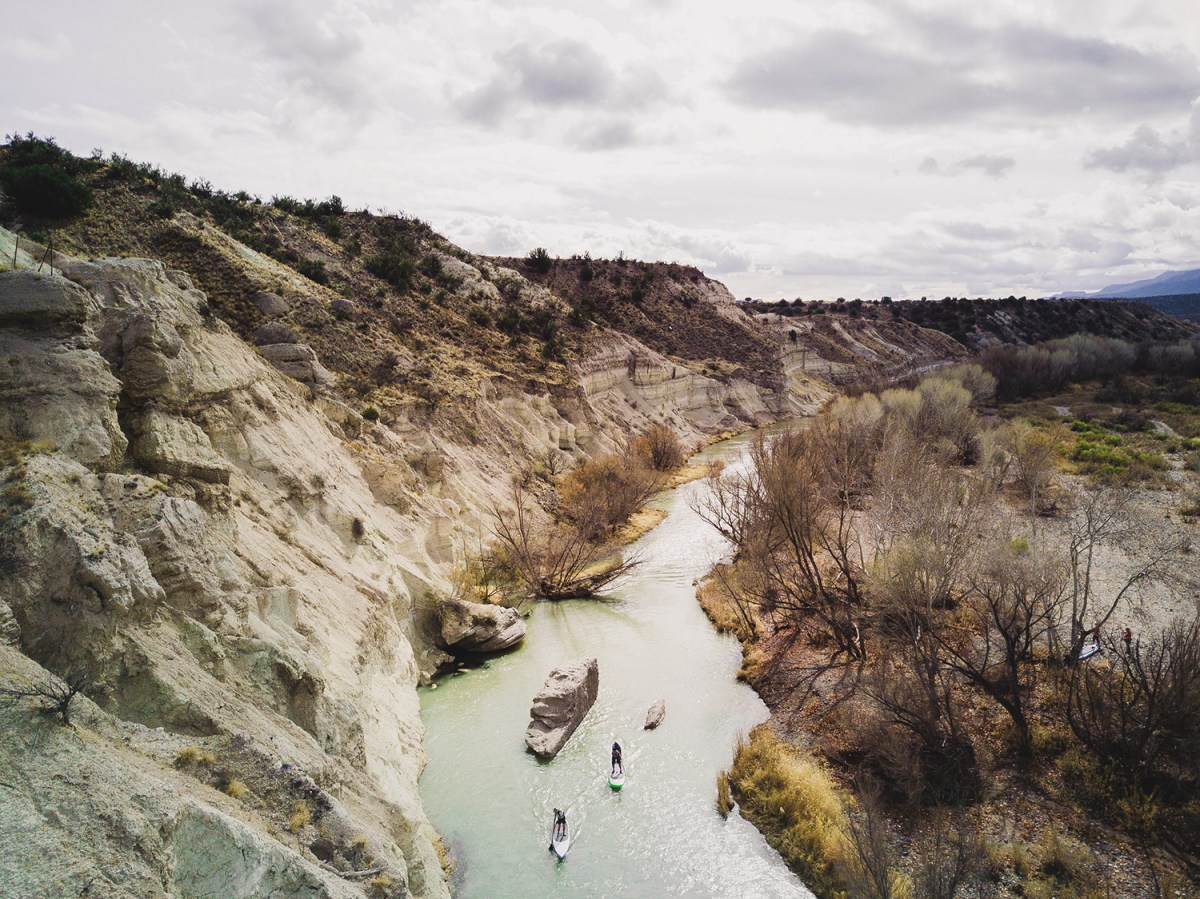 Mastered the out-and-back lake trip? Time to try a one-way journey. Paddle down a river and discover new sights the whole way. Look for sections of mellow water that match your skill level; ideally walk the section first, looking for rapids and other hazards. Unlike with flatwater, it’s more likely you’ll end up in the water, so consider wearing a wet– or dry suit and, for more difficult or whitewater sections, a helmet.
Mastered the out-and-back lake trip? Time to try a one-way journey. Paddle down a river and discover new sights the whole way. Look for sections of mellow water that match your skill level; ideally walk the section first, looking for rapids and other hazards. Unlike with flatwater, it’s more likely you’ll end up in the water, so consider wearing a wet– or dry suit and, for more difficult or whitewater sections, a helmet.
Particularly in places like Colorado with lots of rivers and no coastline, river-specific SUP equipment is growing in popularity. Such boards, like the Hala Radito inflatable, tend to have a swallowtail design for extra stability (great in tighter spaces) and a retractable center fin (great in shallows). River boards are also generally shorter, typically 9 to 10 feet, for increased maneuverability, since reading currents and reacting quickly to obstacles are critical to a successful river paddle.
3. Go greener.
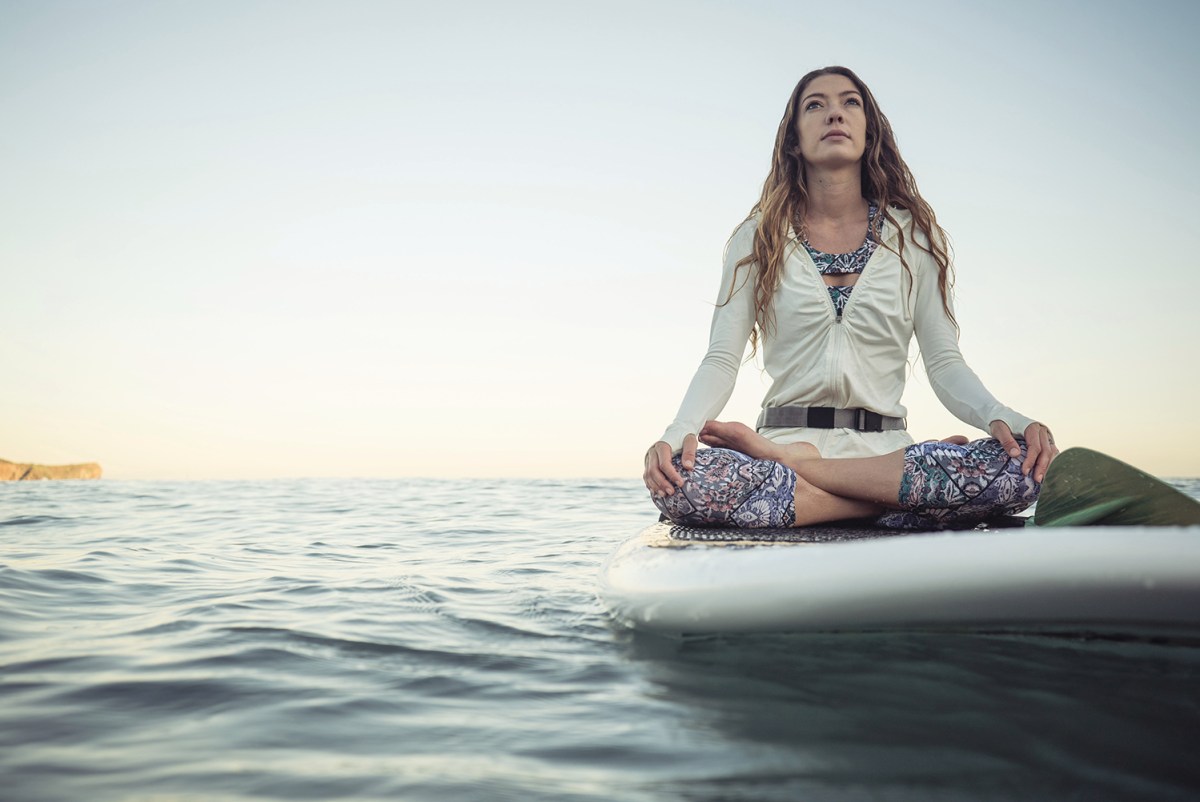 Try lessening your environmental impact with a more sustainable stand up paddle board. Founded in 2012 by Sustainable Surf, the ECOBOARD Project independently reviews board materials and manufacturing processes and certifies them so that paddlers can easily identify greener boards. SUP brand Surftech partnered with prAna to make boards that boast an ECOBOARD certification that you can find at REI. The collab boards feature deck pads crafted from BLOOM foam, an algae-based material that helps offset the use of nonrenewable petrochemical ingredients found in most foams.
Try lessening your environmental impact with a more sustainable stand up paddle board. Founded in 2012 by Sustainable Surf, the ECOBOARD Project independently reviews board materials and manufacturing processes and certifies them so that paddlers can easily identify greener boards. SUP brand Surftech partnered with prAna to make boards that boast an ECOBOARD certification that you can find at REI. The collab boards feature deck pads crafted from BLOOM foam, an algae-based material that helps offset the use of nonrenewable petrochemical ingredients found in most foams.
4. Use your legs.
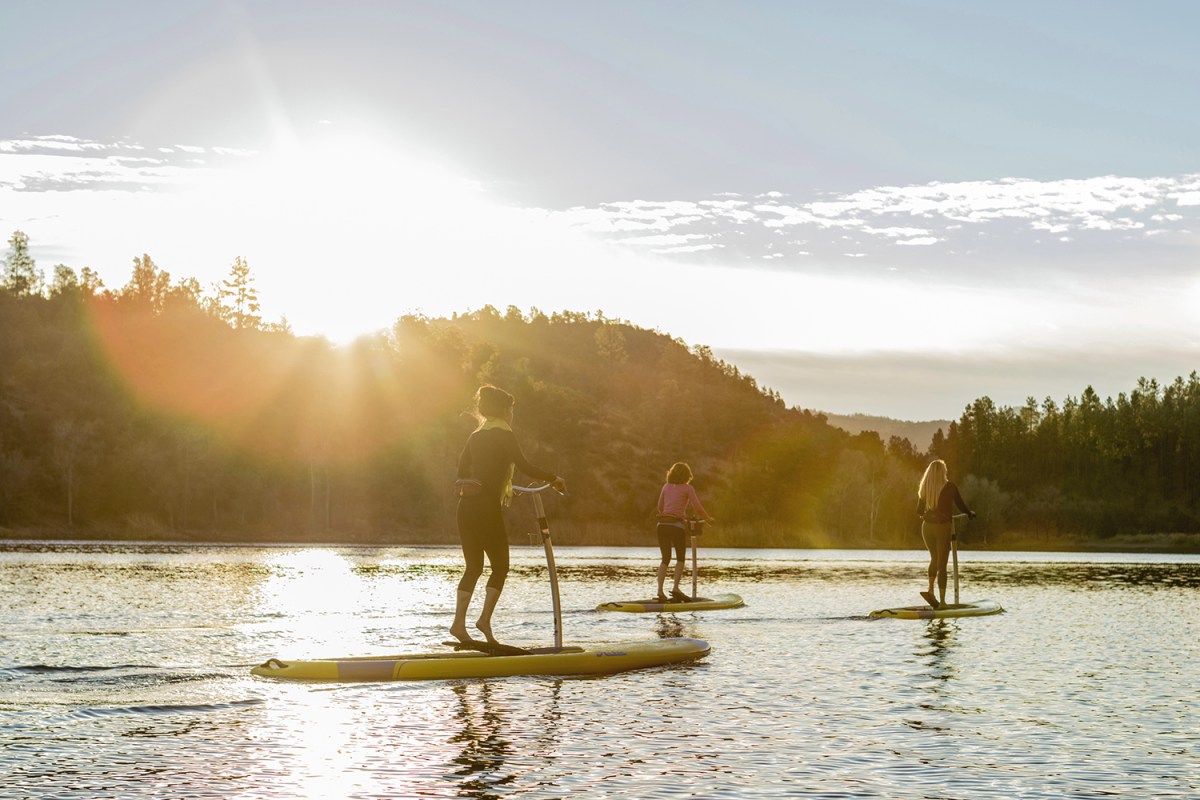 Never miss leg day when you upgrade your rig to a pedal board. Exactly what it sounds like, this board takes the “paddle” out of SUP, shifting the action from your arms to your legs. The “paddler” stands on the board and shifts their weight between two pedals while holding a handlebar (like a scooter).
Never miss leg day when you upgrade your rig to a pedal board. Exactly what it sounds like, this board takes the “paddle” out of SUP, shifting the action from your arms to your legs. The “paddler” stands on the board and shifts their weight between two pedals while holding a handlebar (like a scooter).
Not sure where to start? Go with the original. Hobie, an innovative watersports brand, invented the pedal board in 2016. Wider than your typical paddle board, the Mirage Eclipse ACX Stand Up Pedal Board (available in 10.5- and 12-foot options) offers exceptional stability and a smooth ride, making it a great choice for newcomers. You can remove the handlebar and rudder for easy transport, and the fins fold down for navigation in the shallows and hassle-free beach landings. It can also convert back to a classic stand up paddle board (paddle not included) for ultimate versatility.
5. Accessorize.
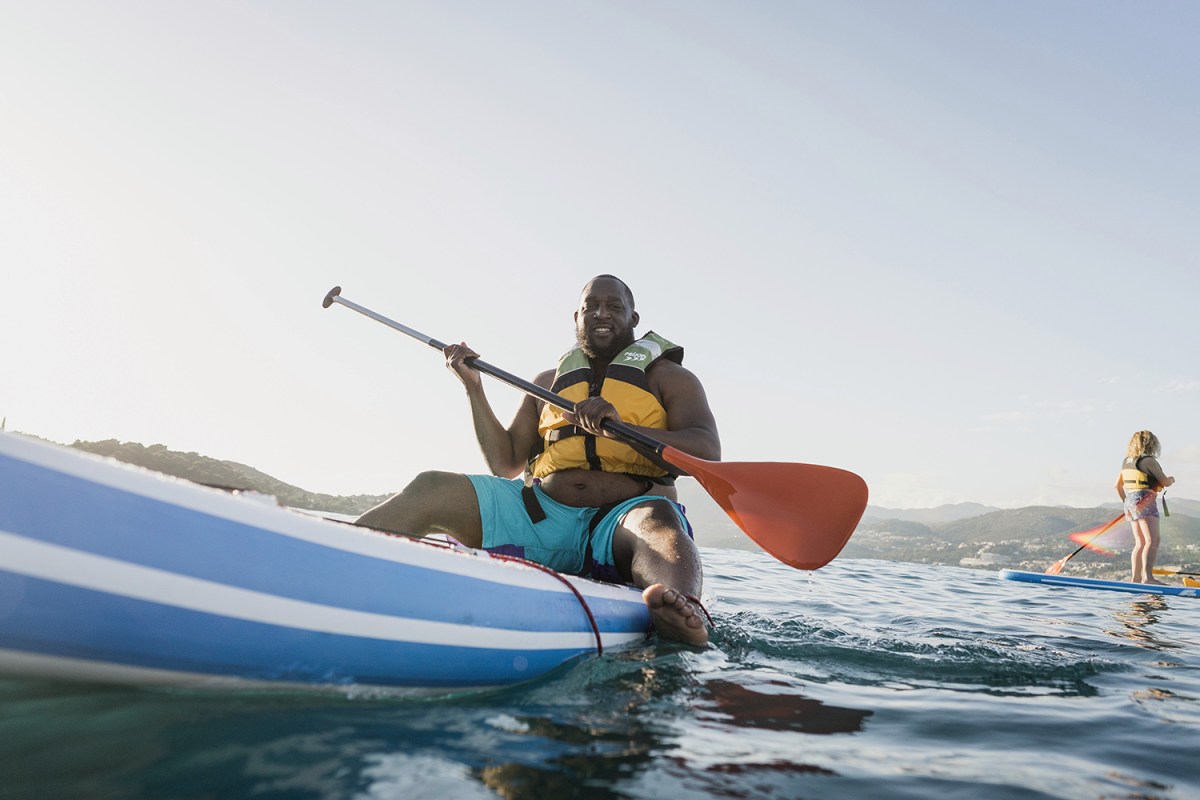 When you’ve mastered beginner paddling, consider upgrading your paddles and PFDs. “[An ultralight paddle cuts down] the weight you have to move to propel yourself over the course of the day,” Thomas says. Try the Werner Zen 95, which weighs less than 1.5 pounds.
When you’ve mastered beginner paddling, consider upgrading your paddles and PFDs. “[An ultralight paddle cuts down] the weight you have to move to propel yourself over the course of the day,” Thomas says. Try the Werner Zen 95, which weighs less than 1.5 pounds.
Look for PFDs with extra storage, inflatable belt styles and lower-profile construction for more mobility and breathability. A good bet: the NRS Ninja. Originally designed for freestyle kayakers, this sleek PFD is becoming popular among SUPers for its wide range of motion.
6. Hook a big one.
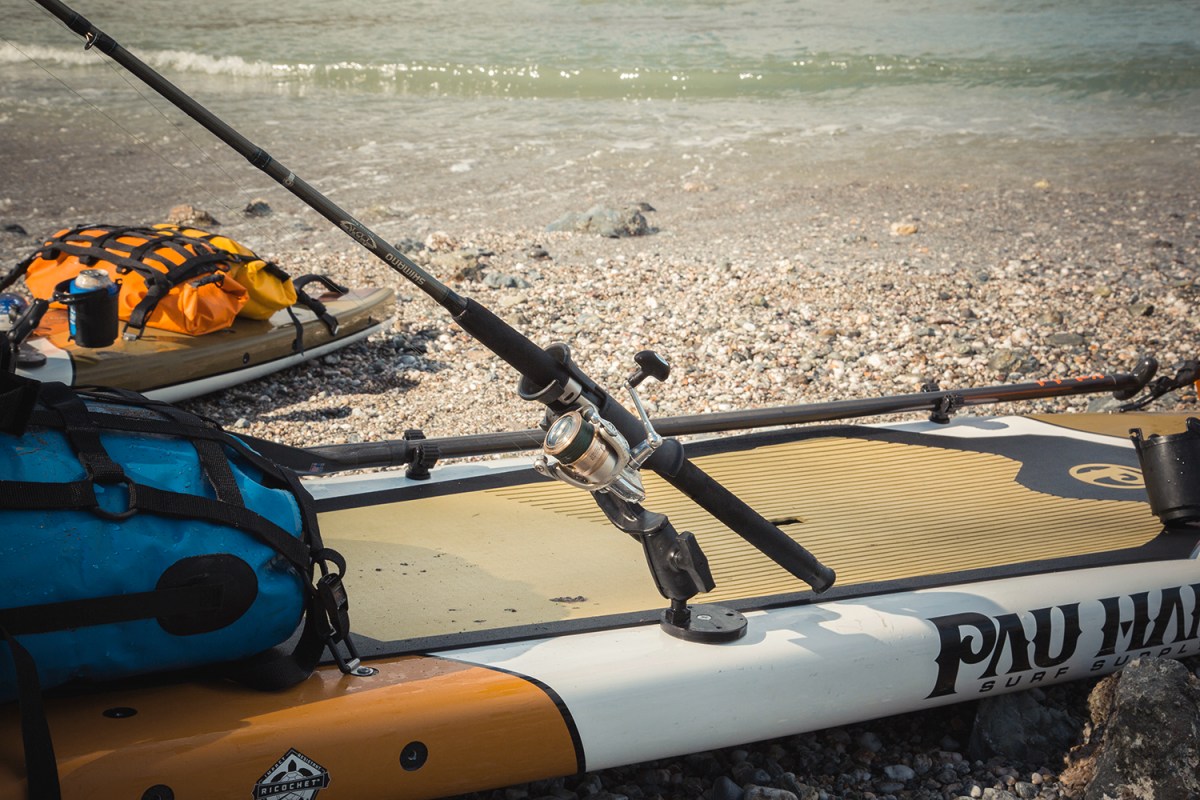 Quiet and unobtrusive, a SUP can help an angler reach remote fishing holes and keep them stealthy all the while (provided that the paddler has a proper license, of course). Wider, more stable boards are best for fishing, and accessories like the Pau Hana SUP Fishing Kit and the Bote Tackle Rac Paddleboard Attachment allow you to easily attach rods and other necessary gear.
Quiet and unobtrusive, a SUP can help an angler reach remote fishing holes and keep them stealthy all the while (provided that the paddler has a proper license, of course). Wider, more stable boards are best for fishing, and accessories like the Pau Hana SUP Fishing Kit and the Bote Tackle Rac Paddleboard Attachment allow you to easily attach rods and other necessary gear.
7. Try an inflatable.
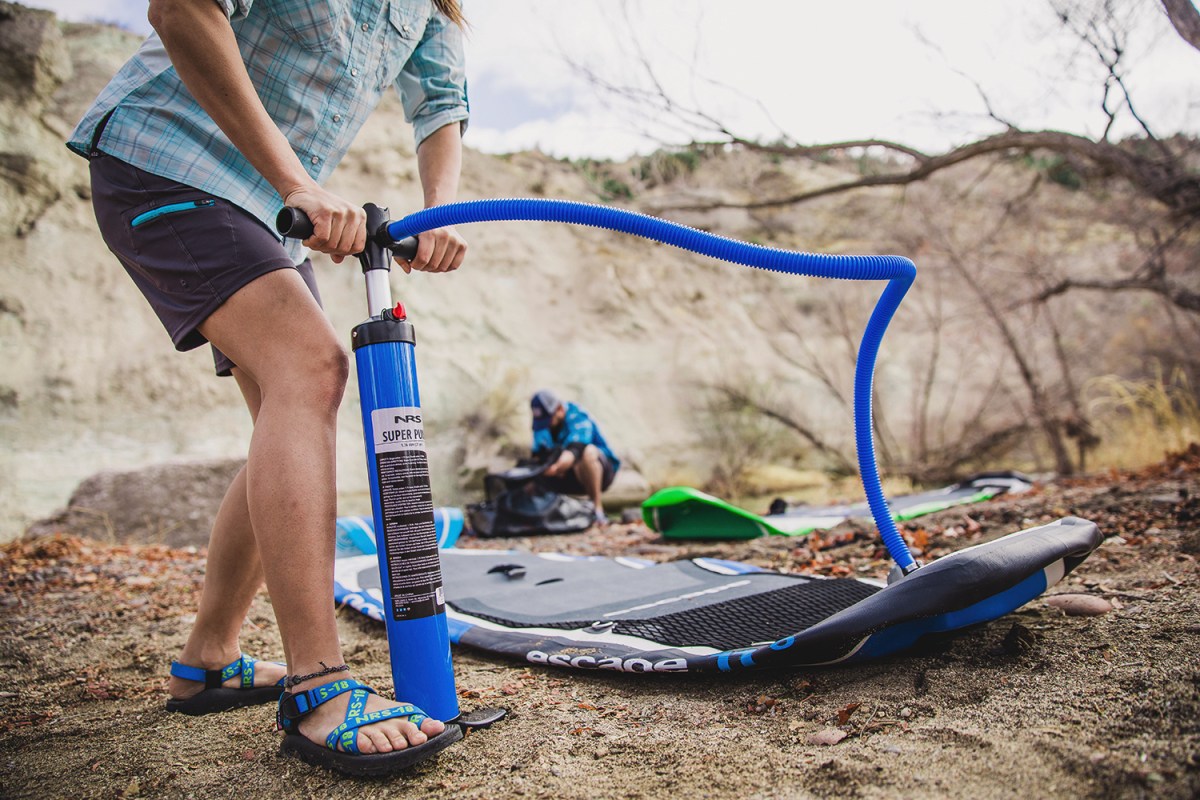 It used to be that hard boards performed better, but inflatable boards were easier to store and transport. These days, you don’t have to sacrifice much in the way of performance to cash in on an inflatable’s ease of use. Thanks to improved construction, they’re now more rigid, making them more stable and easier to maneuver on the water.
It used to be that hard boards performed better, but inflatable boards were easier to store and transport. These days, you don’t have to sacrifice much in the way of performance to cash in on an inflatable’s ease of use. Thanks to improved construction, they’re now more rigid, making them more stable and easier to maneuver on the water.
Inflatables are also getting lighter and more compact when deflated, so boards like the Red Paddle Co. Compact Inflatable SUP can be carried up to alpine lakes and other foot-accessed bodies of water. (They’re about half the size of “conventional” boards; this one weighs in at around 28 pounds.) Surprisingly, such boards don’t sacrifice much in the way of performance: “It’s easy to inflate [and] paddles really well,” says Casey Hatch, REI watercraft buyer.
Want to try stand up paddle boarding for the first time? Check out our Intro to SUP advice, then take a class or rent a board. If you’re ready to buy your first board or try a new one, we can help you choose.
